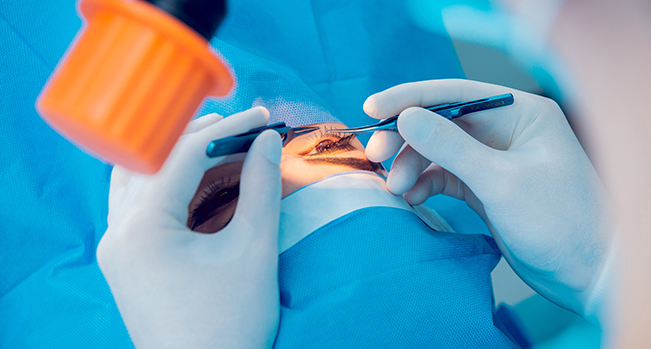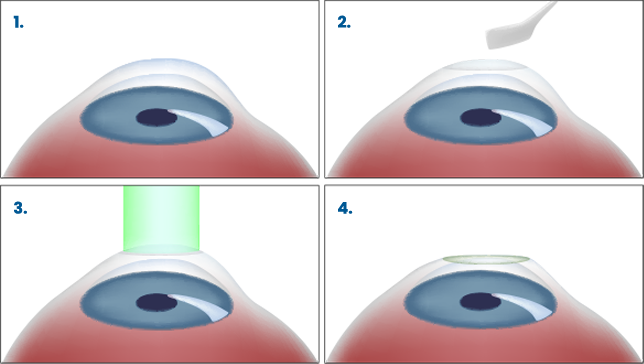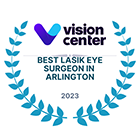Photorefractive Keratectomy (PRK)

Understanding this LASIK Alternative
If you wear glasses or contacts, or suffer from nearsightedness, farsightedness, or astigmatism, you’ve likely heard that a LASIK procedure can improve your vision. But did you know there are alternative procedures available for your eyes? One of those is called photorefractive keratectomy, or PRK for short.
What is photorefractive keratectomy (PRK)?
PRK is a type of laser eye surgery, like LASIK, that treats vision problems by reshaping the cornea (your eye's clear, protective outer layer). This procedure helps correct refractive errors in the eye, allowing you to see better and focus on things more clearly, whether they are close by, far away, or while reading.
Depending on your individual eye health, you may need PRK surgery in one or both eyes. After examining your eyes, Dr. Silk can help you determine whether you are a good candidate for PRK or LASIK, as some patients are better suited to one procedure or the other.
Find out if PRK is right for you.
The Benefits of PRK
90% of PRK patients achieve 20/20 vision without glasses or contact lenses.
If you have a thin cornea and are not a candidate for LASIK, PRK may provide an alternative path.
PRK offers the same long-term benefits as LASIK.
Here’s what to expect during your PRK vision correction procedure.
First, Dr. Silk will evaluate your unique eye needs by examining your eyes and reviewing your medical history, to see if you are a suitable candidate for PRK. Then, he’ll walk you through the risks, benefits, and costs of the procedure. If you and the ophthalmologist decide that PRK vision correction surgery is right for you, then you’ll be scheduled to come back for the outpatient procedure, which typically takes less than 10 minutes.
The PRK Procedure

- Anesthetic drops will numb your eye, while an eyelid holder is placed to keep your eye open for the ophthalmologist. These steps prevent any discomfort or blinking during the procedure.
- Your corneal epithelium will be removed to allow the doctor access to the eye. After PRK, these will be the first cells to regenerate and start the healing process.
- You’ll be asked to focus on a target light, while the ophthalmologist reshapes your cornea to more ideal measurements.
- A contact lens will be placed over your eye to protect it and aid in healing.
That’s it! After just a few minutes, your PRK procedure is complete. You’ll need to be driven home by a friend or family member following the surgery and make sure you follow the post-op instructions Dr. Silk will provide you. These will likely include the use of eye drops, which prevent infection and aid in the healing process. It’s important to rest, use sunglasses when outdoors, avoid eye irritants like dust, pollen, and face creams, and keep from doing any strenuous activity or heavy lifting.
It’s common to experience mild pain in or around the eye for the first day after your surgery. Short-term blurred vision is also reported. Just be sure to follow the eye doctor’s instructions, call the office if any unusual side effects develop, and attend follow-ups with your doctor, as scheduled.
Still have questions?
Which is better? LASIK vs. PRK
Both LASIK and PRK correct refractive vision problems by reshaping the cornea, so many people might be wondering: Which is better, LASIK or PRK? That’s a question that only you and your ophthalmologist can decide, after your unique eyes are evaluated and you discuss the possible risks and benefits of both. LASIK and PRK are relatively low-risk and quick procedures. Most often, it comes down to eye candidacy (if the procedures will work for you) and personal preference.
If you’d like to know whether PRK or LASIK is right for you, schedule a free consultation with Dr. Silk. You could be on your way to being free from glasses or contact lenses!













.png)

